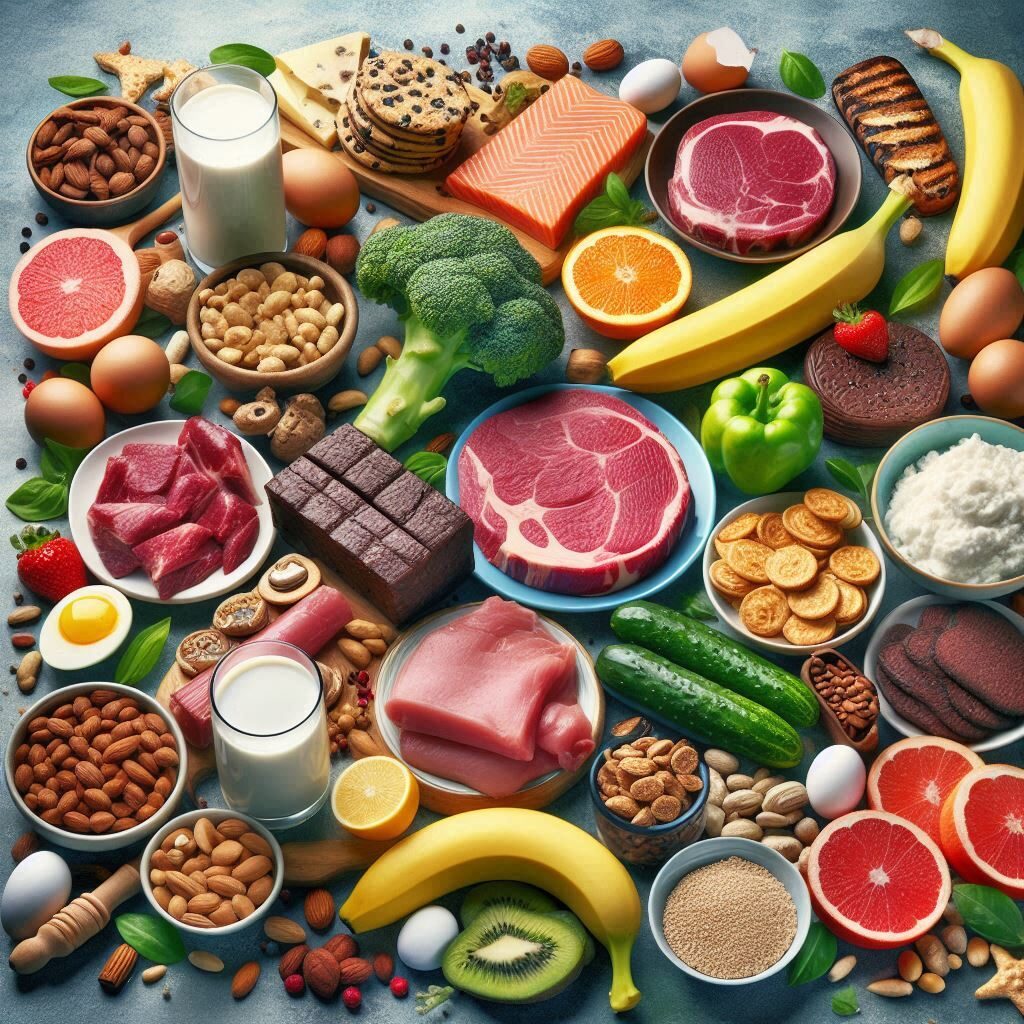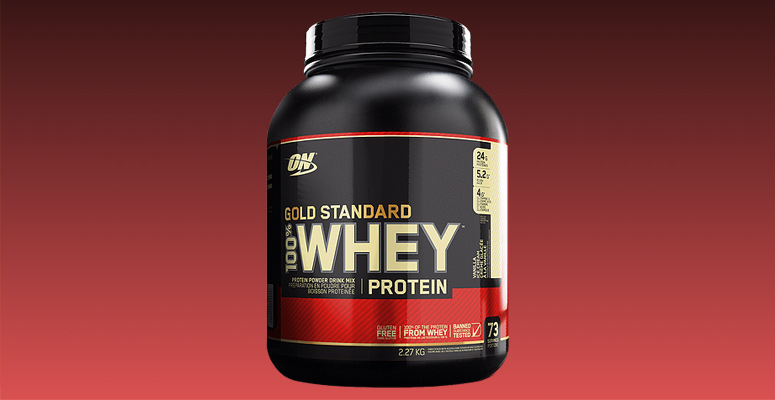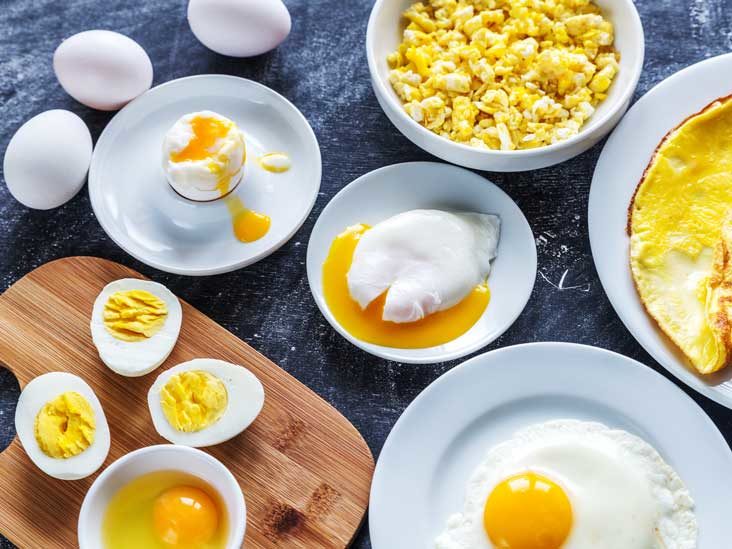Tofu
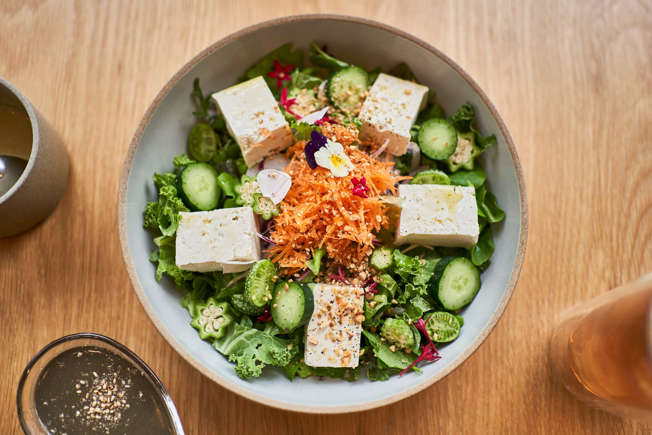
Made from soybeans, tofu is a complete plant-based protein that delivers 21.8 grams of protein in a half-cup serving. “Extra firm and firm tofu are great for stir fries and when you want the tofu to maintain its shape,” says Amidor. “Soft tofu can be battered and sauteed or pureed while silken tofu can be used in smoothies, blended and in sauces.”
Have some leftovers you’ll use in future tofu recipes? Tofu freezes well for up to five months. Just defrost in the fridge and drain the excess liquid when you’re ready to use
Black Beans
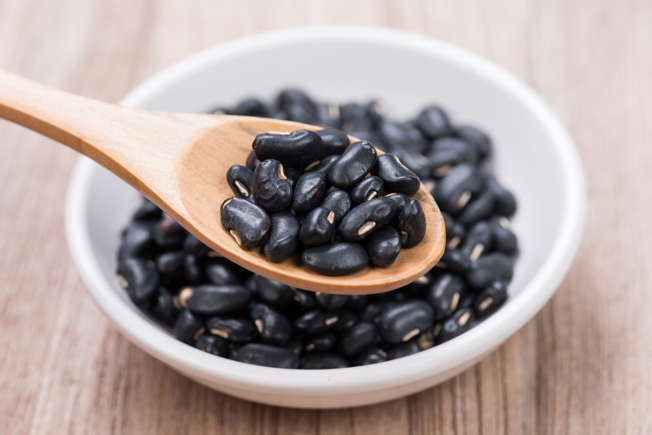
Canned black beans with no added sodium are a great shelf-stable way to pump up your protein while also boosting your iron and fiber—they last for two to five years unopened. A half-cup serving yields 6.99 grams of protein, and it’s a lovely addition to chili, mixed with rice or tossed over a salad. You can also consult these recipes that start with a can of black beans if you need to use up a few cans. Can’t find low-sodium options? Amidor says that rinsing the beans can reduce the sodium by up to 40%.
Peanut Butter
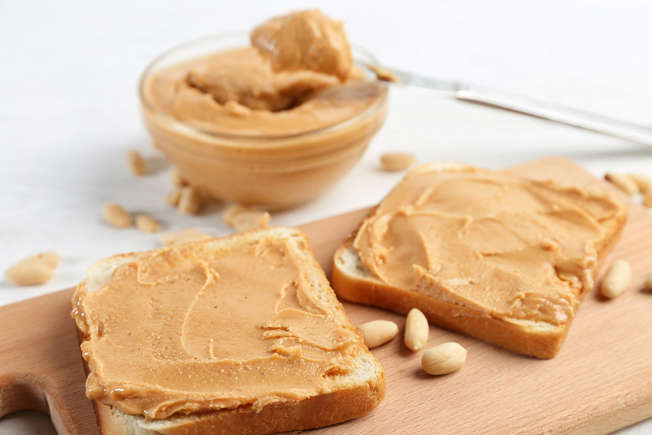
Who doesn’t love an old-fashioned peanut butter and jelly sandwich? When paired with whole wheat bread, this is a complete meal that provides 8 grams of protein—and it doesn’t matter if you choose crunchy or smooth. You’ll also get about 20% of your recommended daily amount of niacin, 8% of your daily dietary fiber and 10% of your day’s vitamin E in just two tablespoons.
An open jar of peanut butter can be stored in the pantry for up to three months, Amidor says, then should be stored in the refrigerator for an additional 3-4 months. Or follow these ways to use up a jar of peanut butter faster.
Salmon
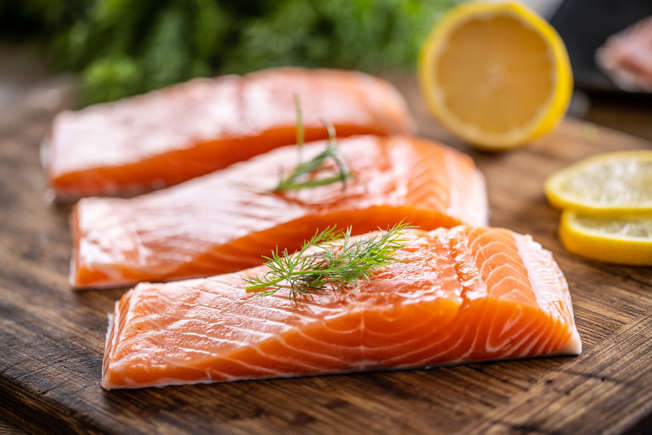
Fresh, frozen or canned, salmon is a protein powerhouse, with almost 19 grams per 3 ounces. “Whether you choose farmed or wild, it is up to you,” “If affordability is a factor, choose the cheaper one as you will still get all the nutrition, including heart-healthy omega-3 fats, which most folks don’t get enough of.” The Food and Drug Administration’s (FDA) Dietary Guidelines for Americans recommend at least 8 ounces of seafood per week based on a 2,000-calorie diet, and salmon is one of the “best choices” when it comes to limiting mercury.
Quinoa
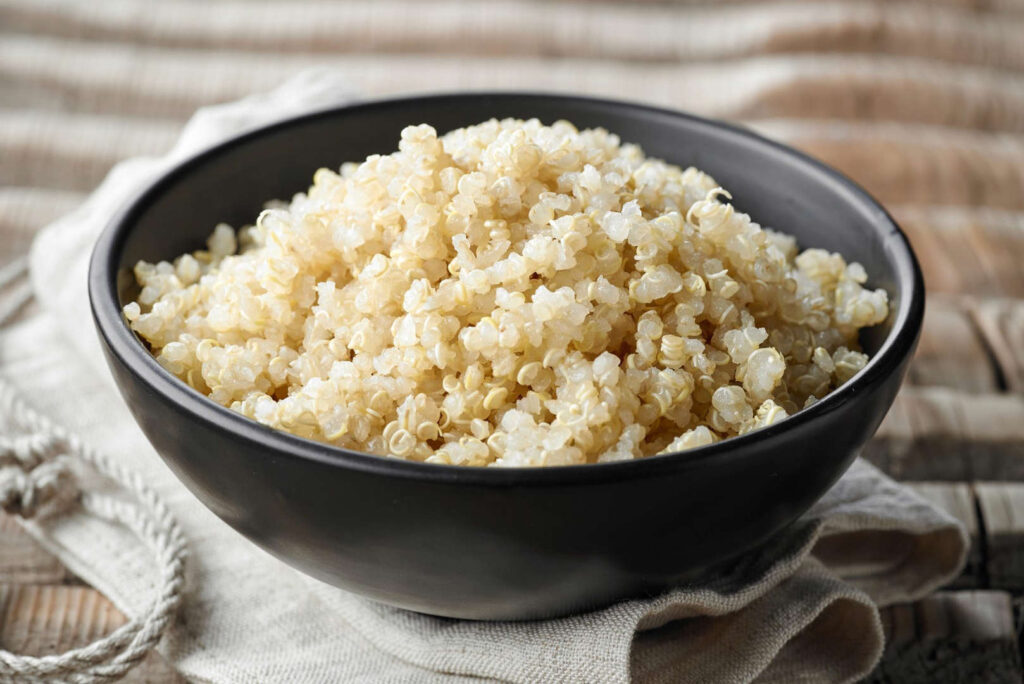
This seed is categorized as a whole grain, and aside from boasting 8.14 grams of protein in a cooked cup, it also provides manganese, phosphorus, magnesium, folate and thiamin. “Look for pre-rinsed quinoa, as the seed naturally has a bitter outer covering, which is washed off when rinsed,” says Amidor, noting that the white, red, black and rainbow varieties all have a similar taste and nutrition content.
Cottage Cheese
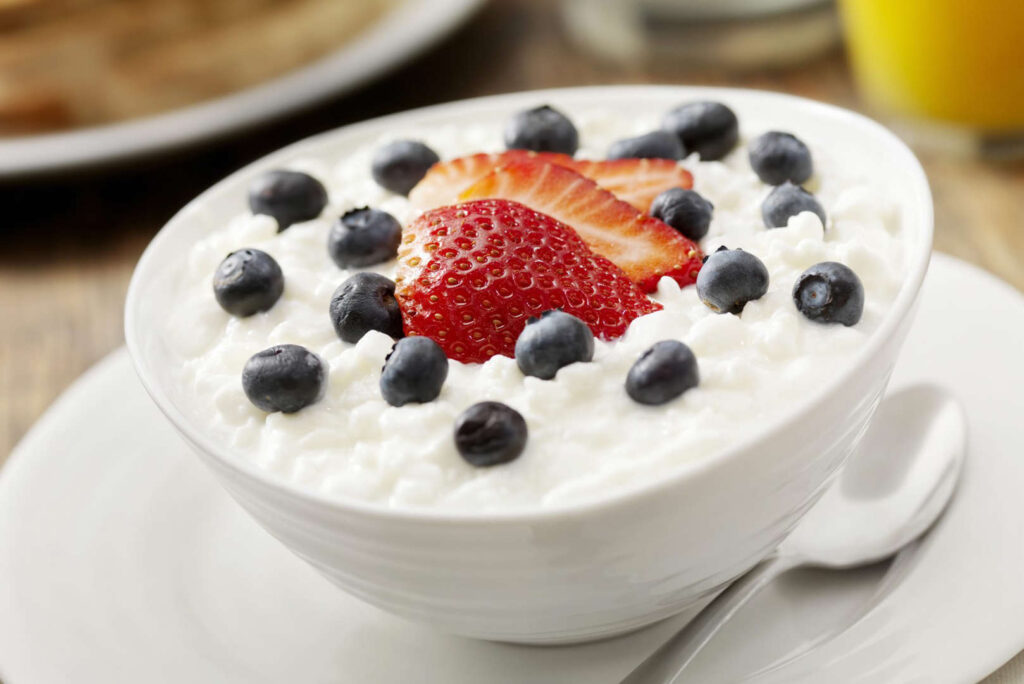
Cottage cheese packs 11 grams of protein into a one-cup serving, but the health benefits don’t stop there. “It also provides calcium, numerous B vitamins, selenium, iodine and phosphorous,” says Amidor. “Enjoy it topped with fruit and nuts as a snack or meal, and use blended cottage cheese in smoothies and dips.” Cottage cheese pancakes, anyone?
Greek Yogurt
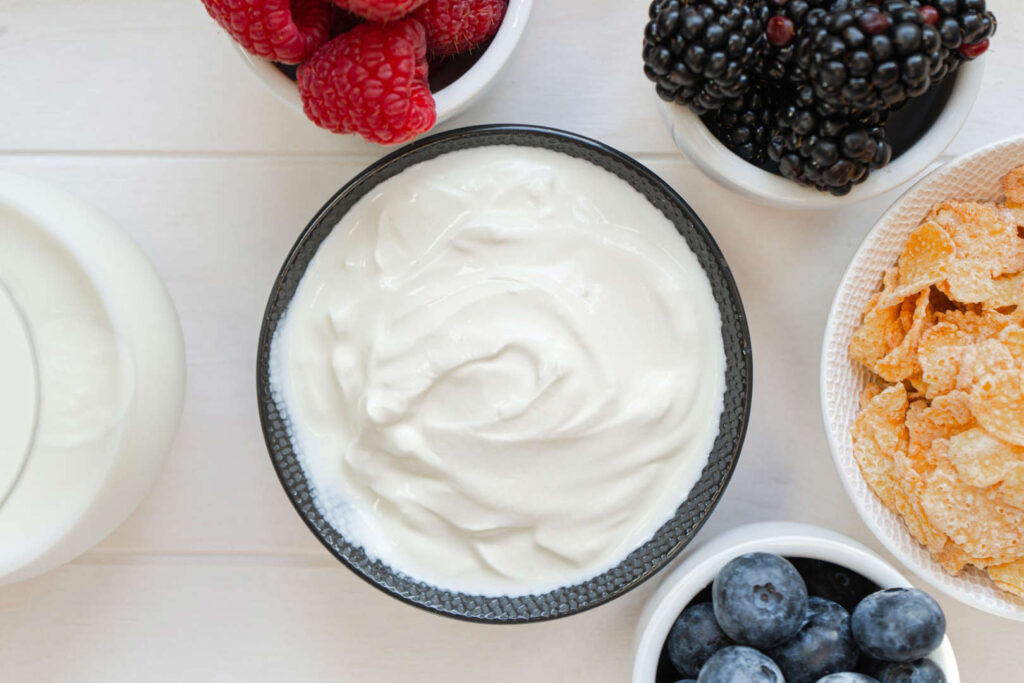
Hop off the regular yogurt train because the health benefits of Greek yogurt are unmatched—7 ounces of lowfat plain Greek yogurt contains 19.9 grams of protein. For those who consider dairy your foe, you may be able to tolerate Greek yogurt. “Due to the live, active cultures, some folks with lactose intolerance find Greek yogurt easier to digest, plus it has a lower lactose level compared to other dairy foods like milk,”. Greek yogurt is an easy replacement for mayo in many recipes and also works as a decadent dessert or stuffed in French toast.
Chicken
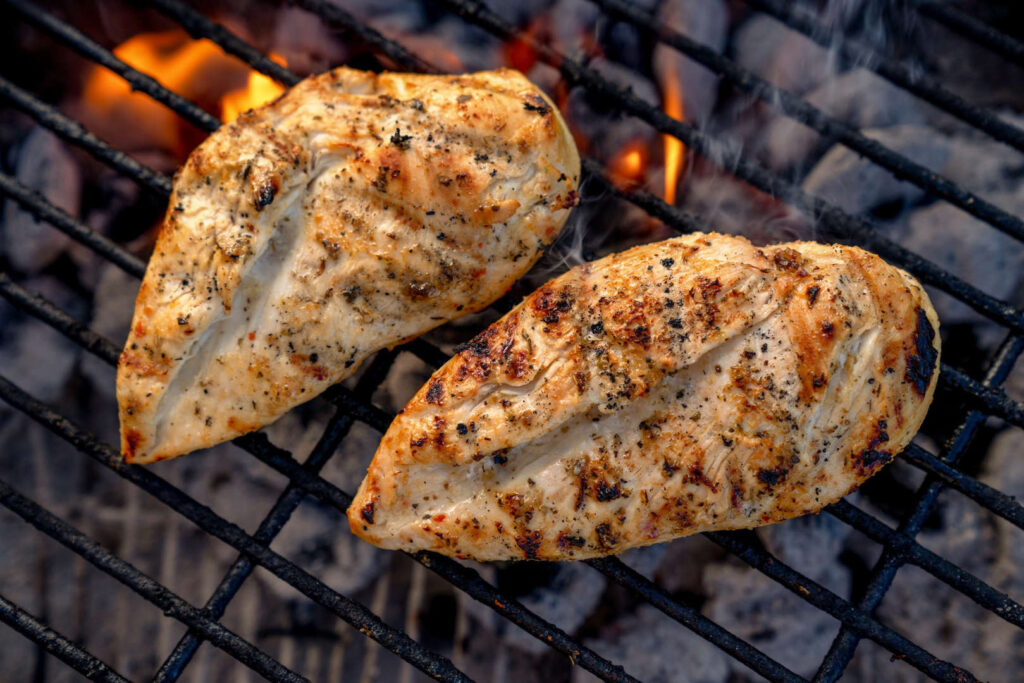
Depending on which part of the chicken you’re eating (breast or thigh), 3 ounces of chicken contains between 20 and 26 grams of protein. “While many people reach for the breast because it’s leaner and a little higher in protein than the thigh, thighs can also fit into a healthy diet and tend to be more flavorful,”. “Chicken thighs also offer more iron than breasts, which can be helpful to meet your iron needs.”
Turkey
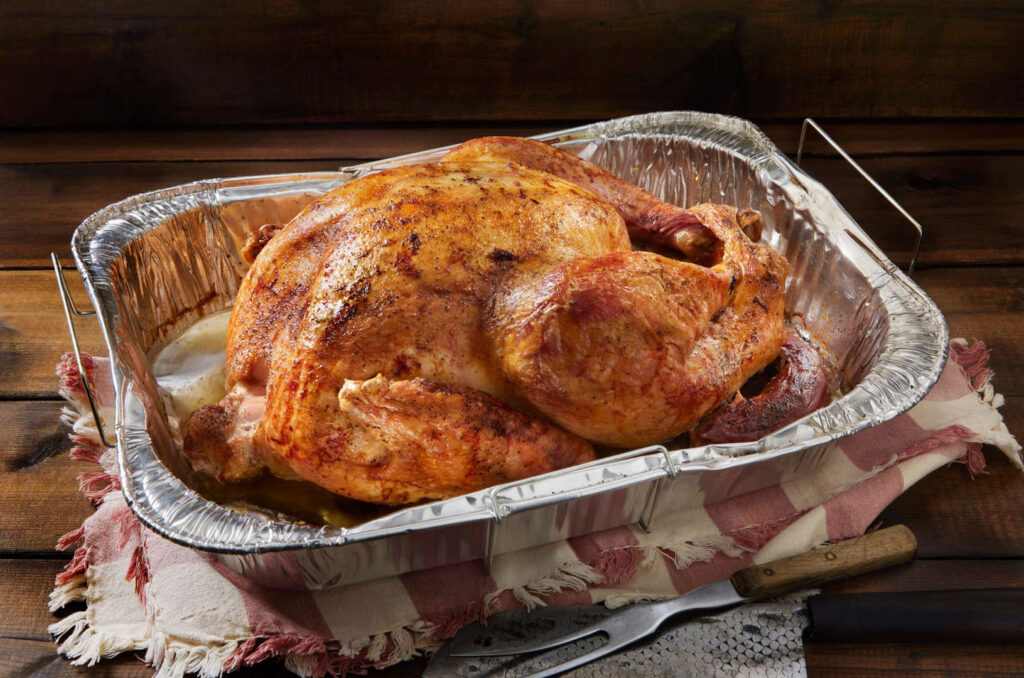
Similarly to chicken, turkey protein varies between 22 and 26 grams of protein for 3 ounces, depending on the cut—white meat will have slightly more protein than dark meat. “I always encourage people to choose the cut they enjoy most because the difference in fat isn’t going to make a significant difference in your health,”.
Edamame
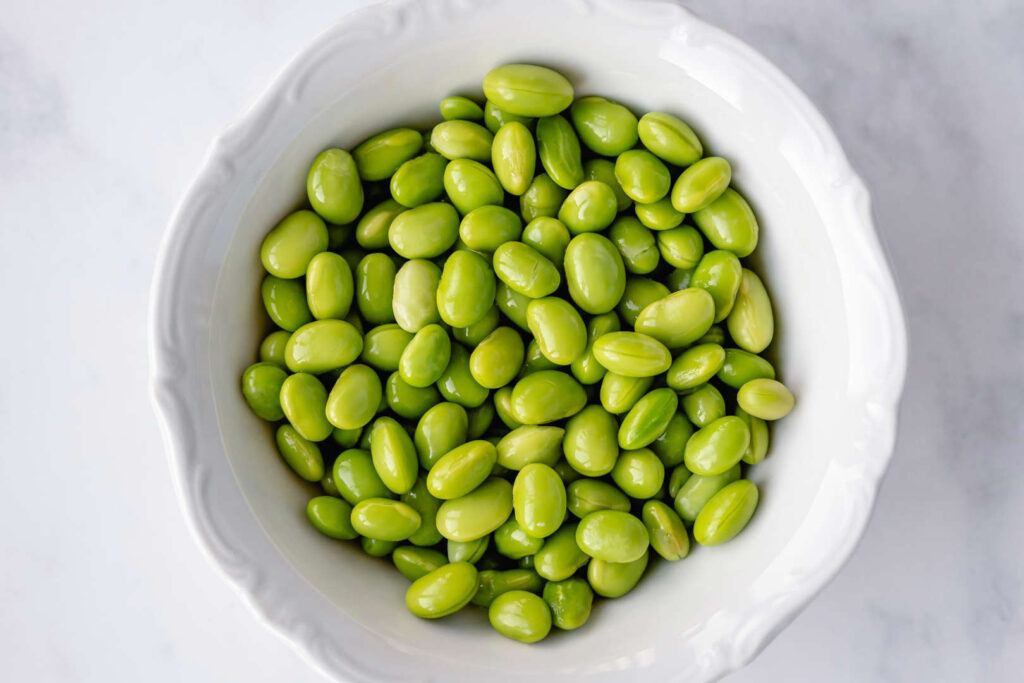
Edamame, or soybeans in the pod, is a solid source of plant-based protein with 9 grams per half-cup. It’s also a good source of fiber, calcium, iron, magnesium and folate. “Edamame is also known for having soy isoflavones, which may be particularly beneficial for peri- and postmenopausal women, as isoflavones are linked to fewer menopause symptoms, increased bone density and lower rates of breast cancer,”.
Tempeh
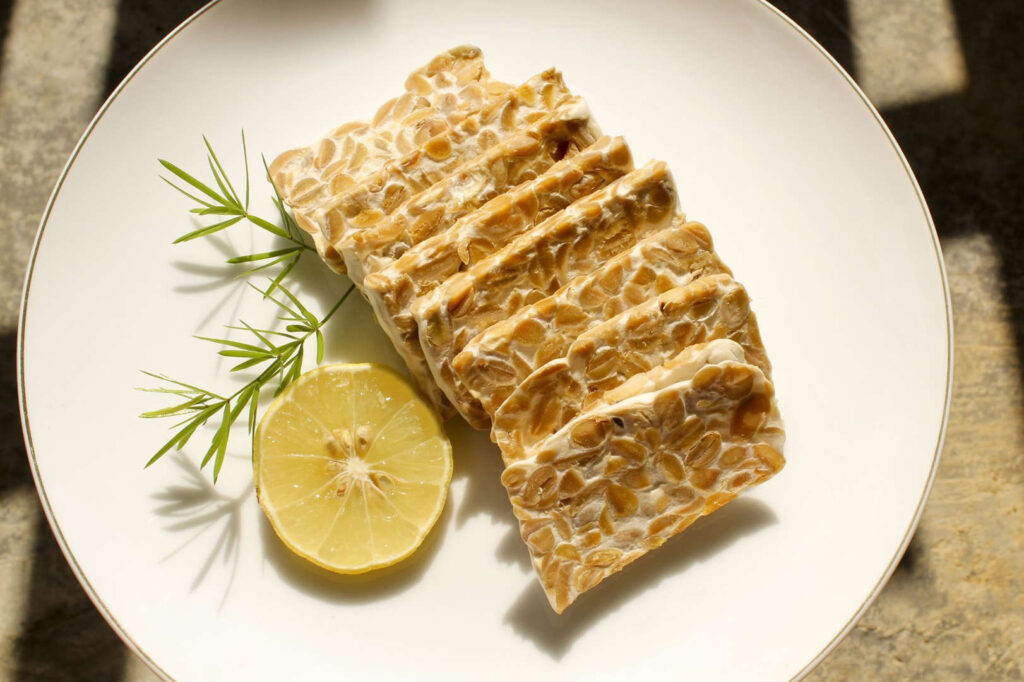
Tempeh, which is made of fermented soybeans, not only offers 15 grams of plant-based protein per 3-ounce serving, but it’s also packed with fiber, iron, calcium and fiber. Like other fermented foods, it contains some probiotics, which may support gut health. Here are at least five ways to cook tempeh to help you start incorporating it into your lunch and dinner roundups.
Chickpeas
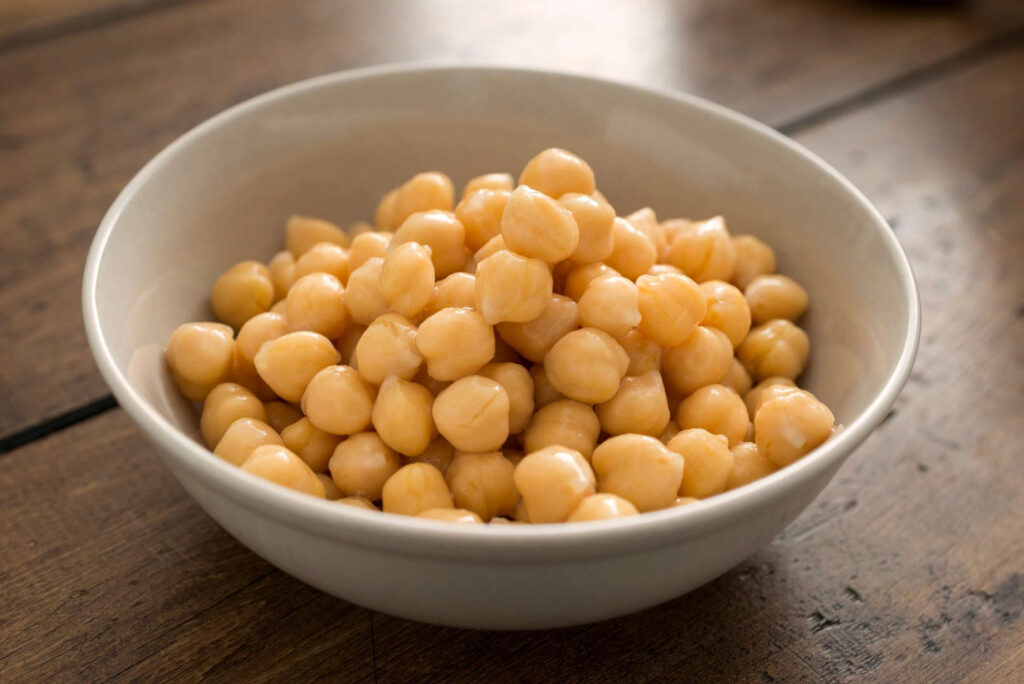
In addition to the 7 grams of protein per half-cup, chickpeas also pack in 6 grams of belly-filling fiber. They’re filled with vitamins and minerals including B vitamins, iron, zinc and magnesium too. If you buy canned chickpeas, Anzlovar recommends choosing low-sodium or no-salt-added options. If you can’t find those, rinsing them does reduce the sodium content.
Tuna
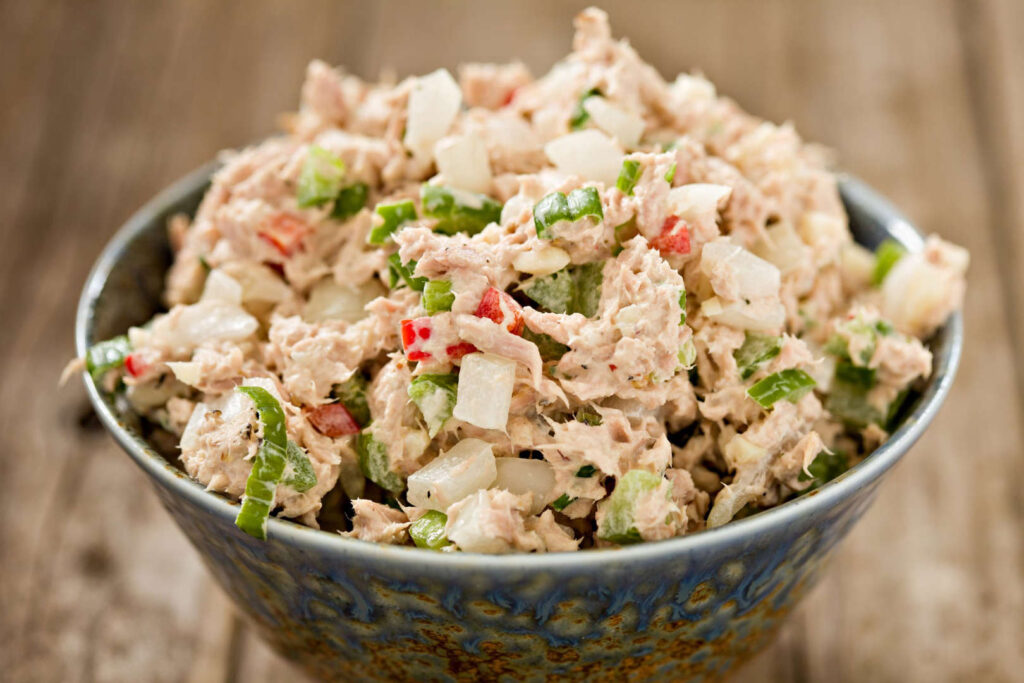
Canned tuna is an easy and inexpensive way to add protein to your diet. Just 3 ounces (a little more than half a can) contains 21 grams of protein. “It’s also a good source of omega-3 fatty acids, which offer tons of health benefits from supporting your heart to your brain,” says Anzlovar. “Canned tuna in olive oil can offer additional healthy fats and tends to be more flavorful and a little less dry than tuna packed in water.” One word of caution: Tuna is a higher-mercury fish listed under “good choices” by the FDA, so only eat this once a week.
Hemp Seeds
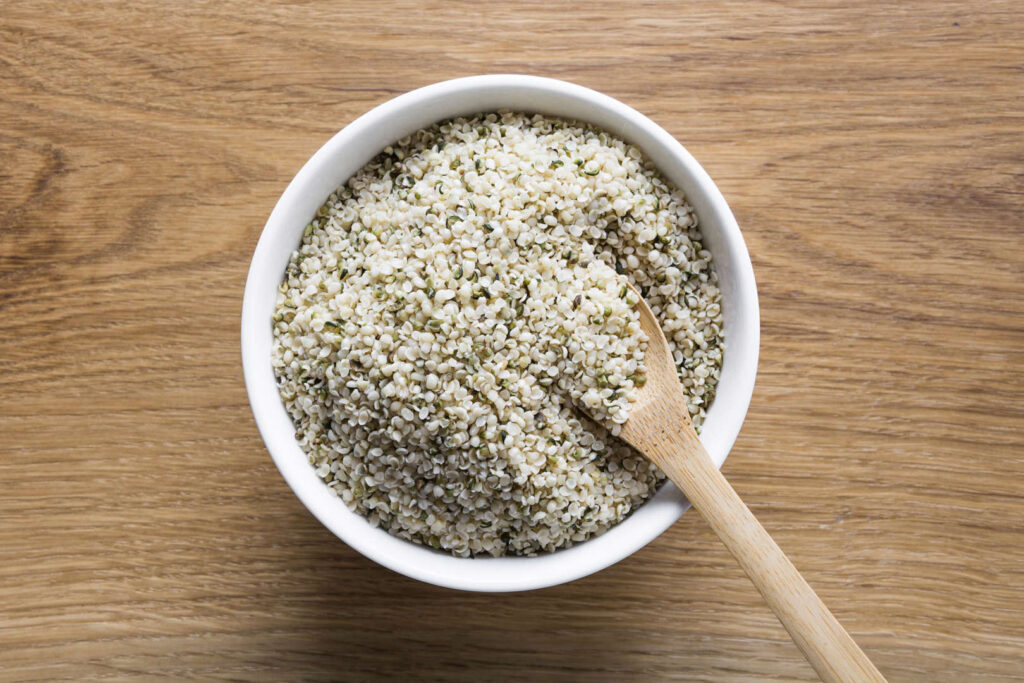
These little seeds from the hemp plant may be tiny, but they offer big benefits. Three tablespoons of hemp seeds contain 10 grams of protein, 20% of your daily iron needs and several B vitamins (including folate). Anzlovar says they’re a great way to consume plant-based omega-3s, which may be helpful for people that don’t eat fish. No wonder they’re an easy way to add protein to smoothies.
Lentils
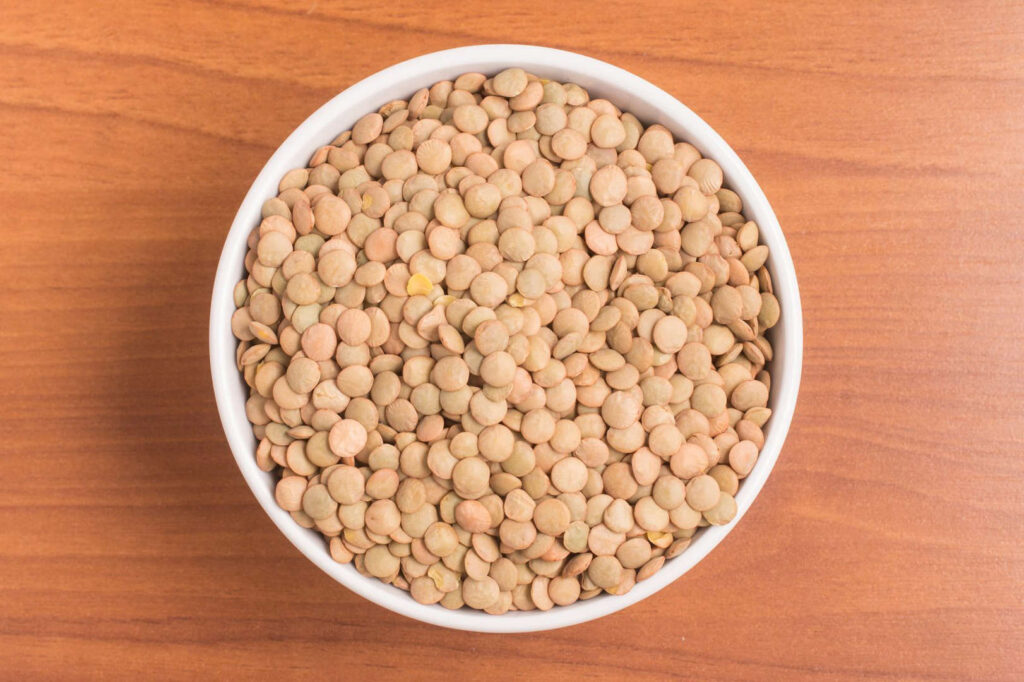
All lentils (black, green or red) pack in around 9 grams of protein and 8 grams of fiber per half cup, along with several vitamins and minerals. “They’re one of the best sources of plant-based iron, with over 30% of your daily needs,” says Anzlovar. If lentils are a little unfamiliar, start with one of these lentil recipes or whip up a batch of vegan lentil soup in just 30 minutes.
